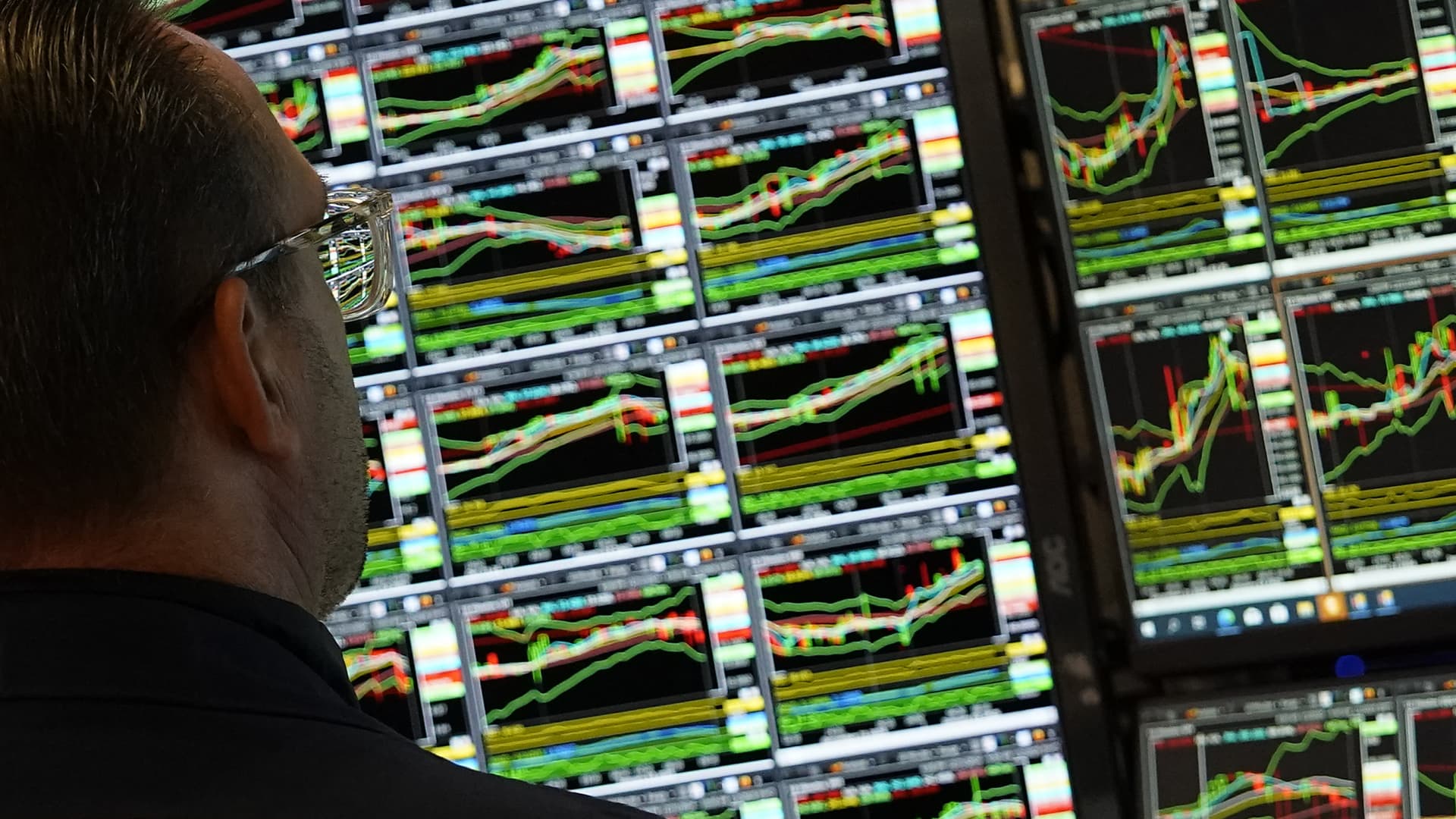John Davi, founder and CEO of investment management company Astoria Portfolio Advisors, has one overriding piece of advice for investors heading into the second half of the year: “Re-risk your portfolio.” The stock market has made a sharp turnaround from its early April lows, when fears over tariffs and their effect on inflation and the econony were at their highest. The S & P 500 was down 15% year-to-date on April 8, but is now up roughly 6.7% for the year as investors have regained confidence in the outlook for the economy , strong corporate profits and AI technology. But investors lately continue to seek out resilient pockets of the market due to uncertain trade policies and geopolitical tensions, however. Like many investors, Davi — whose firm manages $2.5 billion in total assets, including four ETFs — has gotten more constructive on U.S. stocks compared to the beginning of 2025. The recent run-up, particularly in the broader market outside tech, has given him greater conviction in companies beyond classic growth stocks. “Now we’re at a point where earnings revision breadth has had this V-shape recovery. We have a weaker dollar. We’ve got policy uncertainty that’s declined … less tariffs. We have renewed optimism over AI,” Davi told CNBC. In the past, a declining dollar “has been a tailwind for risk assets, globally … rather than keep buying the ‘Mag 7’ stocks, there’s so many other opportunities out there.” “It’s time to re-risk your portfolio,” Davi said, at a time when markets are likely to rally further over the coming six months. ETFs to navigate the rest of 2025 Buying exchange-traded funds tied to the broader market are a generally safe bet for long-term investors seeking passive gains. But Davi’s advice is to look beyond popular ETFs such as SPDR S & P 500 ETF and Vanguard S & P 500 ETF and look instead at opportunities in industrials, energy, real estate and fixed income. Davi named several ETFs that are strong picks heading into the latter half of the year, noting they’re tax-efficient with low fees and a “safer and more conducive” means of accumulating wealth for individual investors. Equal-weighted ETFs are among his favorite during periods of high concentration, as they can offer strong returns and more diversification, particularly when smaller companies outperform. As an example, Davi spotlighted the Invesco S & P 500 Eql Wght Industrials ETF (RSPN) as a better way to gain exposure to industrials than the popular Industrial Select Sector SPDR Fund (XLI) . “There’s all this risk still out there, right. But really, if you strip out the ‘Mag 7,’ the S & P 500 is not that expensive,” he said. An equal-weighted ETF that’s not skewed to the largest stocks today takes advantage of stocks outside technology, or mid-sized and smaller companies, “that are growing faster earnings than these tech stocks.” One of Davi’s top picks is the BNY Mellon Global Infrastructure Income ETF (BKGI) , which has jumped 30% in 2025 and 41% over the past year, against S & P 500 returns of nearly 7% and 15% over the same periods, according to FactSet. The fund’s last 12 months’ distribution yield is 4.17%, its net expense ratio is 0.55% and the average price-to-earnings ratio of its portfolio is 16.2 times trailing earnings, FactSet data shows. The ETF’s top holdings are concentrated in utilities and energy, with Enel SpA , Hess Midstream , Orange SA and Dominion Energy among its top 10 holdings as of March 31. PPI SPY 1Y mountain Astoria Real Assets ETF (PPI) vs. SPDR S & P 500 ETF (SPY) over the past year. Astoria Real Assets ETF (PPI) offers similar opportunities, Davi said. The fund has also outperformed, rallying 14% so far in 2025. With a net expense ratio of 0.78% and a trailing, 12-month yield of 1.36%, the fund’ top holdings include SPDR Gold MiniShares Trust , Rolls-Royce Holdings , Simon Property Group , Shell and Constellation Energy . Industrial and utility stocks have raced ahead this year, gaining more than 13% and 8%, respectively, as investments have ooured into AI-related projects such as data center infrastructure and equipment. In fixed income, Davi pointed to the Schwab High Yield Bond ETF (SCYB) , JPMorgan BetaBuilders USD High Yield Corp Bd ETF (BBHY) , Janus Henderson AAA CLO ETF (JAAA) and the SPDR Portfolio Intermediate Term Corporate Bd ETF (SPIB) as attractive. “Owning credit makes a lot of sense. There’s value in holding high yield credit and corporate credit,” he said.





